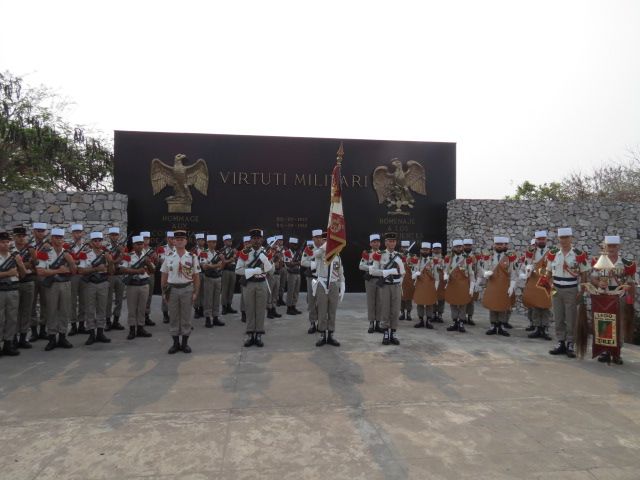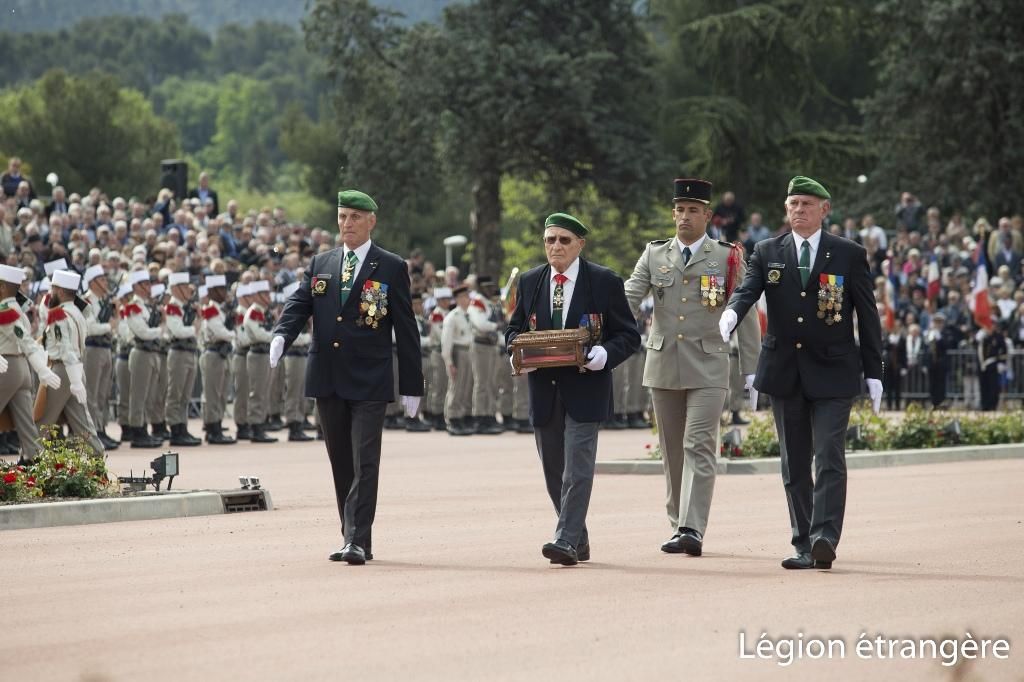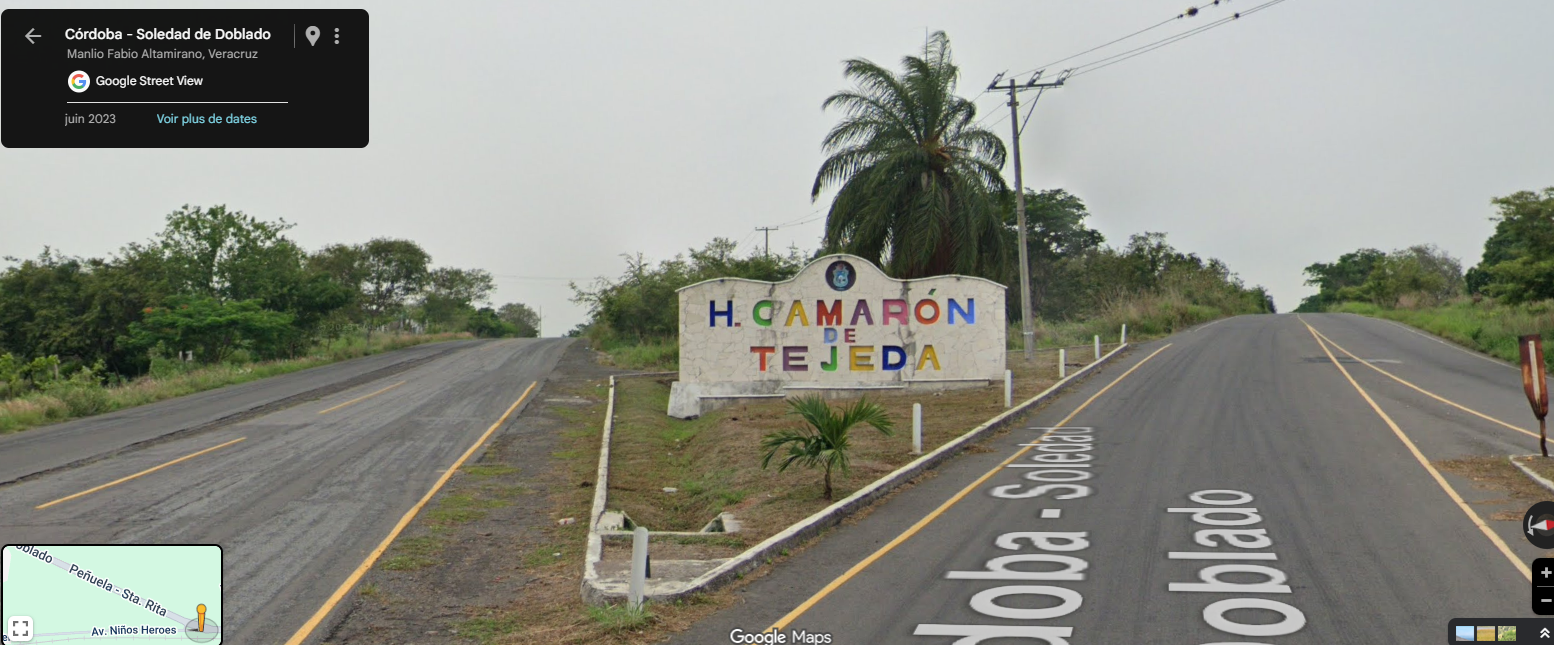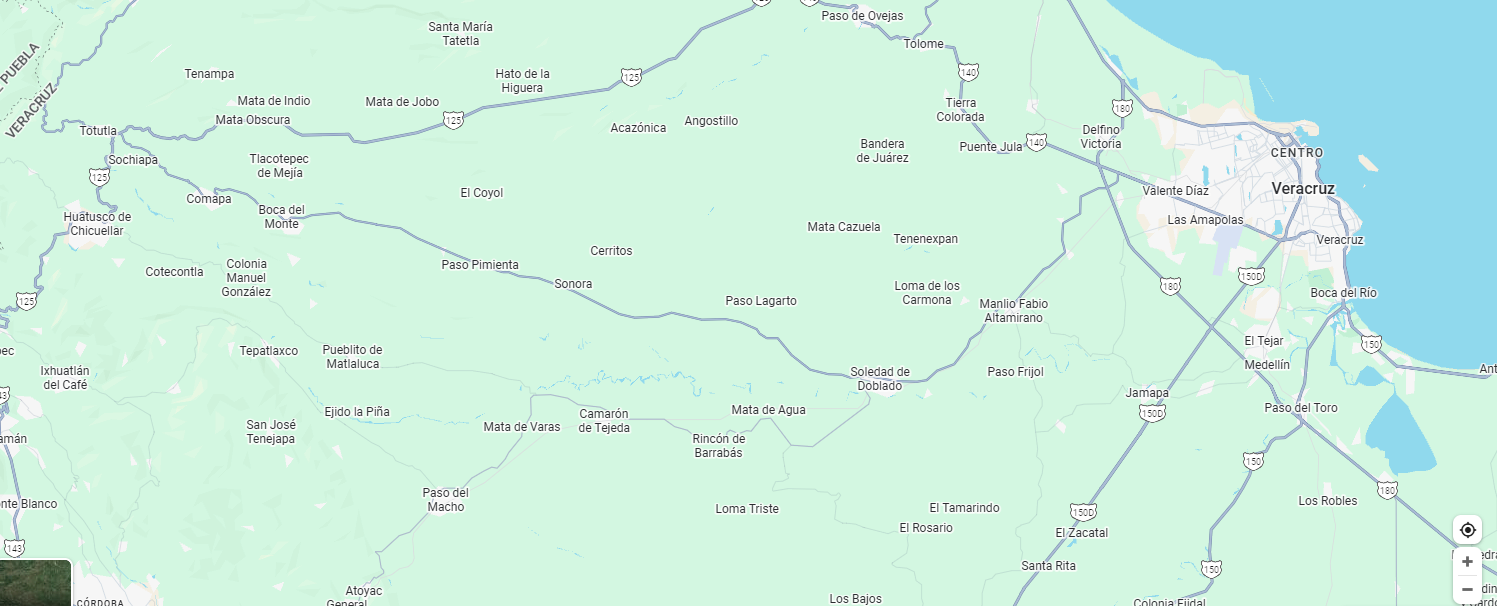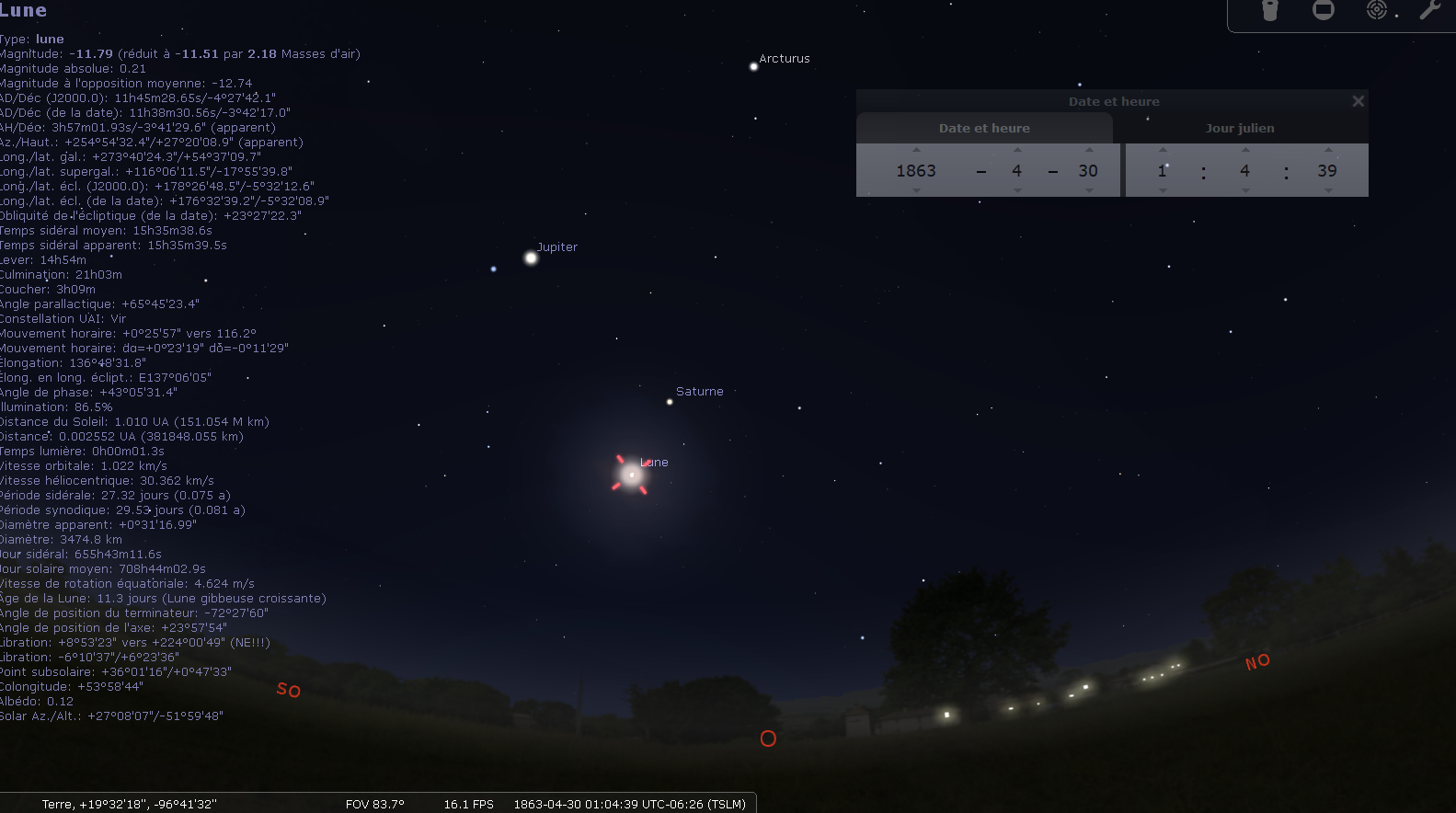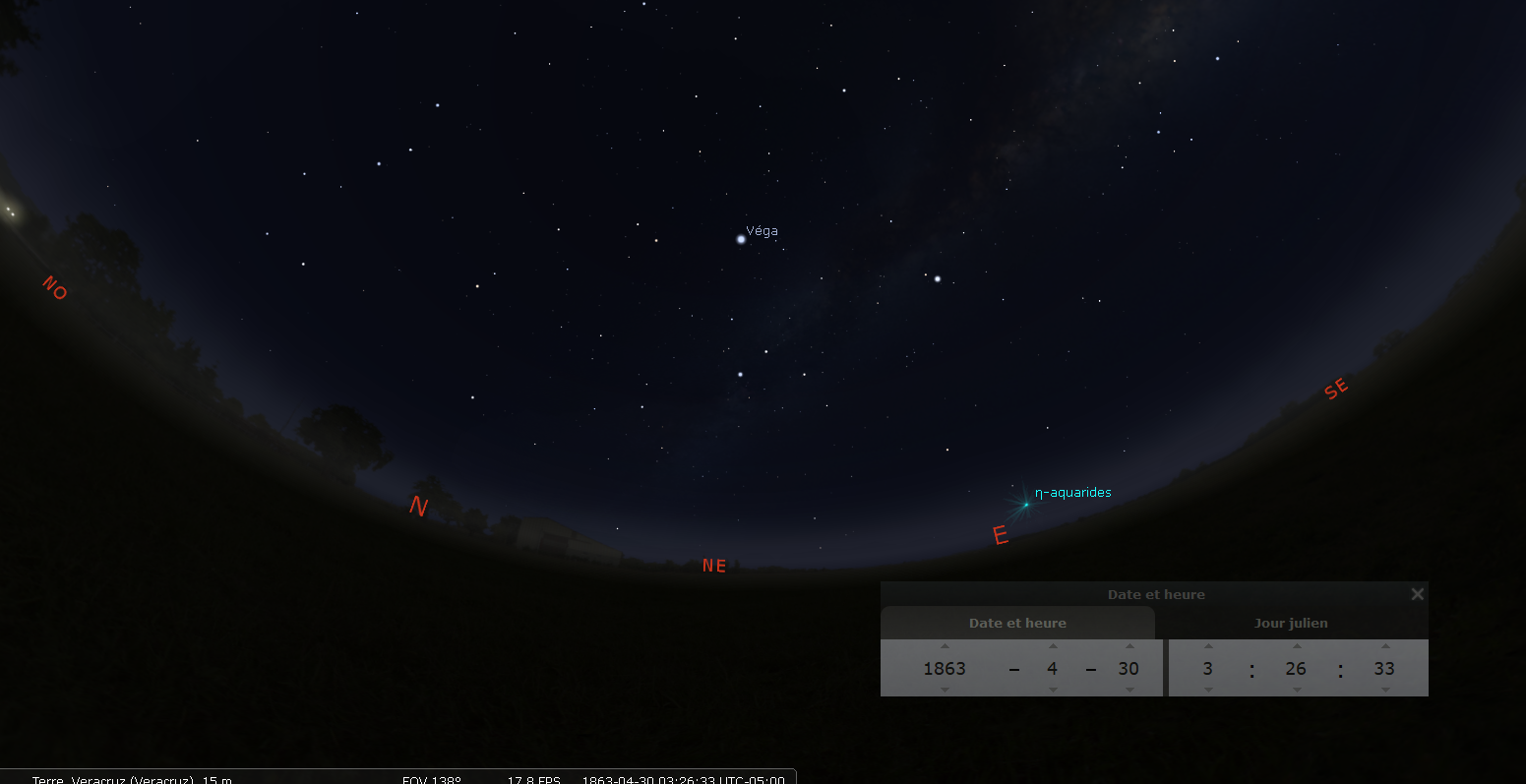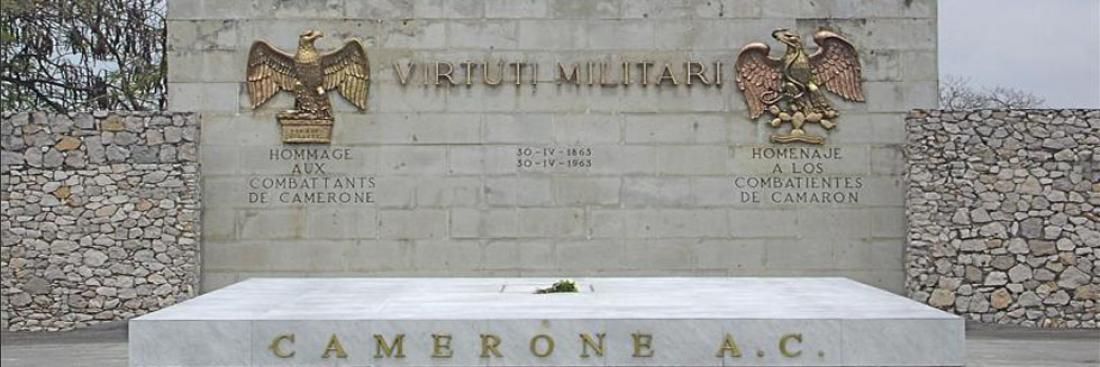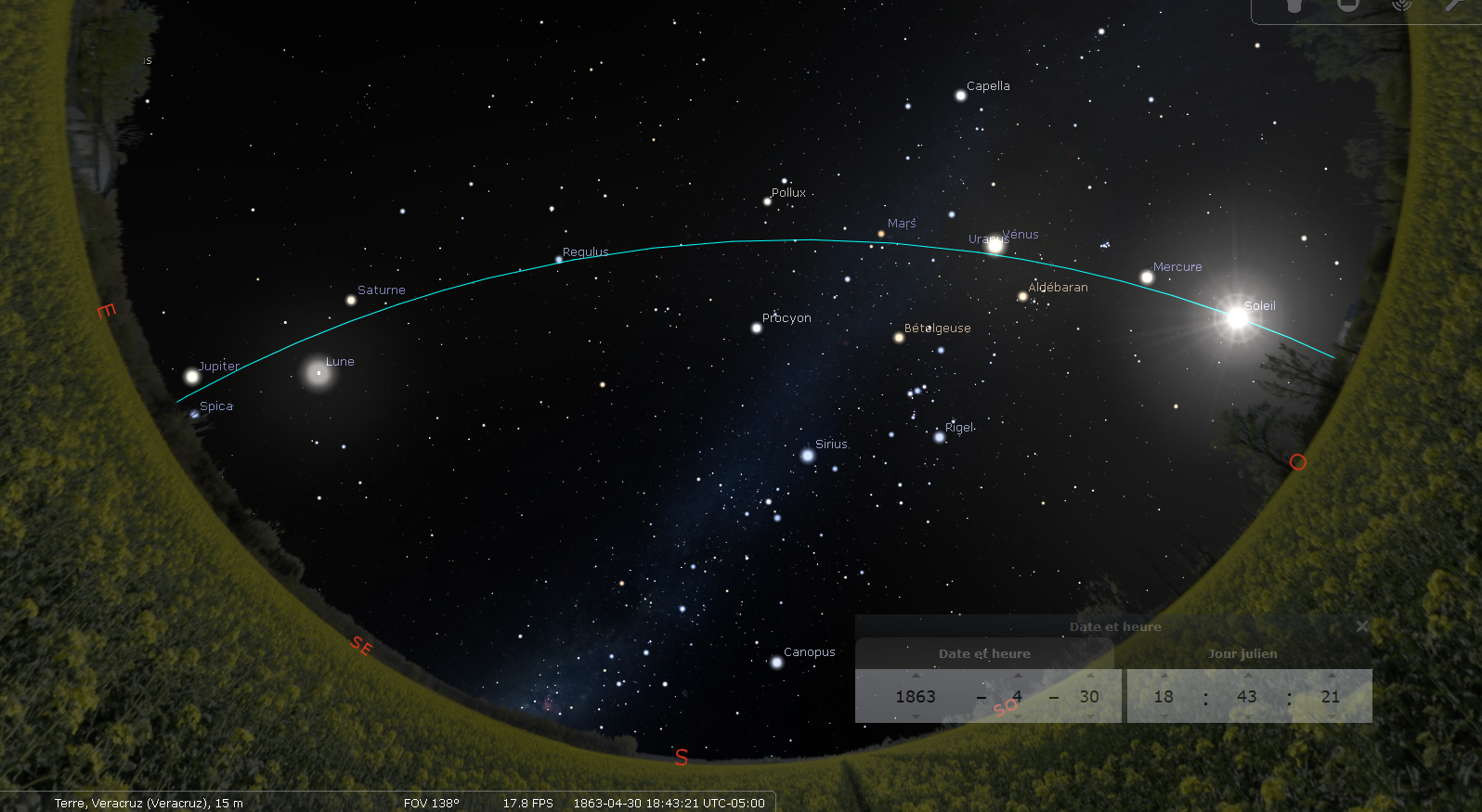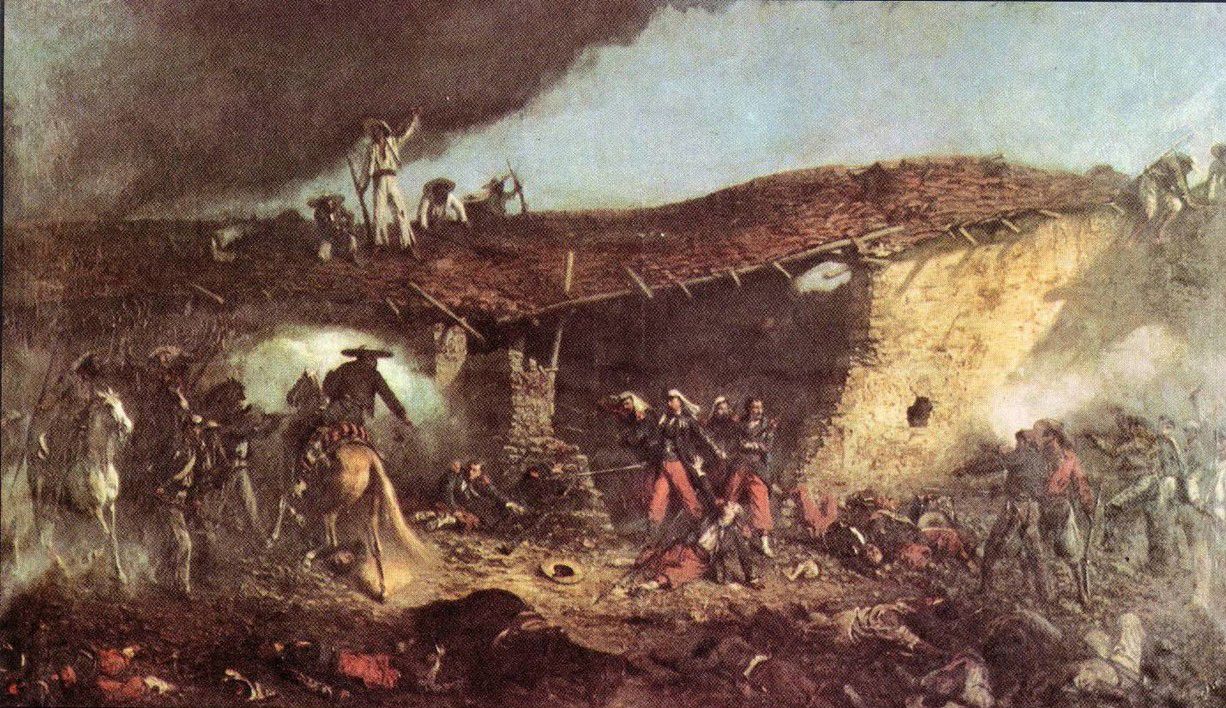The Sky of Camerone
April 30, 1863. Camerone. It is the privileged moment when we feel the pulse of legionary solidarity. Across the earth, we share in the memory of these 63 men who, that day, inscribed in the most glorious pages of the French Army, their courage and respect for their given word. In all the regiments, in all the Veterans' Associations, we listen at attention to the account of this memorable battle.
Everything is meticulously recorded. Really everything?
This distant land, so deeply etched in the memory of mankind, is relatively unknown in terms of its physical and climatic aspects.
Very modestly, with the astronomical means of the time, I allowed myself to travel back to the night of April 29-30, 1863, when Captain Danjou's column set out to meet the convoy. Camerone is located at 19° North latitude, that is, in the intertropical zone.
The trail they are taking winds through the fields. Relatively flat. Hence their brisk pace, aided by the presence of a gibbous Moon, larger than the first quarter, but not quite full. They are walking northeast.
And to accompany these lords, right next to the Moon, sit the two most beautiful planets in the sky, Saturn and Jupiter.
It should be noted that this Saturn-Jupiter conjunction only occurs about every 20 years. The maximum closeness occurred a year earlier, in April 1862. They were so close together that they could have been seen through the same telescope. As soon as they set off at 1 a.m., heading northeast, the great summer triangle rises, composed of Vega, the constellation of Lyra, Altair, the constellation of Aquila, and Deneb, the constellation of Cygnus. Vega, the fifth brightest star in the entire sky, stands in the direction of their march. No doubt Captain Danjou has spotted it and is using it as a guide.
It will take them to Palo Verde at 7 a.m. where, the story tells us, they stop to make coffee. 24 km completed. It is at this moment that the Sun appears. Just like the Mexicans. The terrible day begins. And the Sun will rise very high in the sky, since at noon it will culminate at 85°, almost the absolute zenith. To make a comparison, on June 21st, the day of the summer solstice, here in the south of France, the Sun is at 69.5°.
Let the story of the battle unfold. Let us simply focus on the main event, the sky, and come to the finale. Nothing is denied to men like you.
Victor Hugo wrote, a year before Camerone in Les Misérables: "As night falls when the day fades." Our legionnaires made the supreme sacrifice, and the few survivors will see night fall on this distant land, enveloping these heroes in a pale shroud. Just as it had guided the first steps of the morning, the Moon, escorted by Saturn and Jupiter, will illuminate the bodies of these men with its pale glow. After the Sun left this tragic scene, just above, Venus, like a candle watching over a dead man's room, was gently descending over the horizon. And since it was a rendezvous with History, the entire celestial vault was invited to the show.
Presence of an army of planets in the sky for a heroic Company
I reconstructed the evening sky of April 30, 1863. Imagine my surprise to discover an incomparable astronomical richness, the likes of which certainly exist few, if any. It's not rare, but extremely rare. From west to east, we can see the Sun, Mercury, Venus, Uranus, Mars, and towards the East, the Moon, Saturn, and Jupiter. So much so that, with the exception of Neptune, the entire solar system is present in the sky at the same time.
Personally, I don't remember ever seeing a planetary grouping of this magnitude visible at a glance in my life as an amateur astronomer. And I didn't start astronomy last week. If we add to this stars Sirius, the brightest in the entire sky, Canopus, the second brightest, Capella, Regulus, Spica, Aldebaran, Castor, Pollux, all at the top of the list of the most remarkable stars, and of course the magnificent constellation of Orion, stuck in the center of the painting, it seems simply exceptional.
This communion of the sky with this legendary feat of arms, which has left its mark on generations of legionnaires, borders on the sacred. Even for the most Cartesian among us, isn't this configuration of the sky disturbing? Everyone will think according to their own convictions.
The convoy had passed. Captain Danjou's men were entering history.
Sleep, heroic dead!
